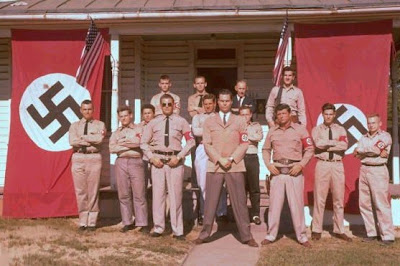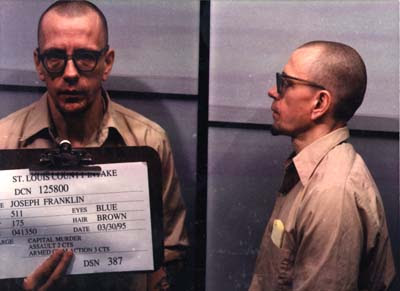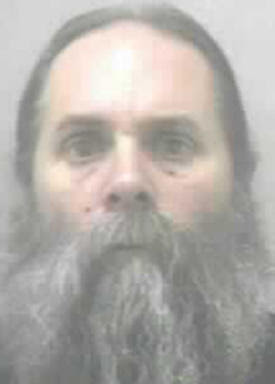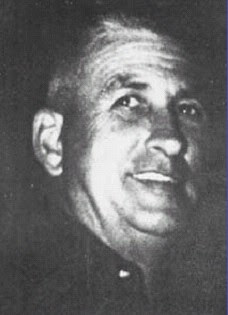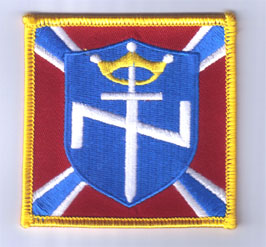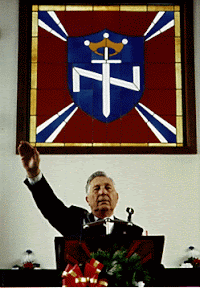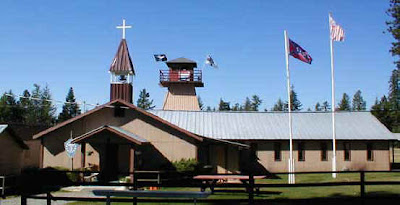In the United States Court of Appeals For the Seventh Circuit
http://caselaw.lp.findlaw.com/cgi-bin/getcase.pl?court=7th&navby=case&no=952901
No. 95-2901
EDWARD PAVLICK,
v.
JIMMY MIFFLIN,
Defendant-Appellant.
Appeal from the United States District Court for the Southern District of Illinois, East St. Louis Division. No. 90 CV 3515--William L. Beatty, Judge.
ARGUED APRIL 23, 1996--DECIDED JULY 18, 1996
Before FLAUM, MANION and EVANS, Circuit Judges.
FLAUM, Circuit Judge. While Edward Pavlick was an inmate at the Menard Correctional Center, he arranged a meeting between a prison guard, Lieutenant Spiller, and another inmate, Daniel Schoolcraft. During this meeting (at which Pavlick was not present), Schoolcraft confessed to Spiller that he had been ordered to "hit" a prison administrator, Superintendent Larry Hopkins. The gang that ordered the hit struck back: four days later, Pavlick was attacked in his sleep by a group of inmates and stabbed 21 times. This case concerns whether Jimmy Mifflin, a prison guard who, according to an eyewitness account, opened Pavlick's cell door and allowed the attackers to enter, may be held liable for Pavlick's injuries.
I.
In 1989, Pavlick was serving a seven year sentence at Menard for sexual assault (he was released from prison in 1991). By all accounts, Pavlick was a well behaved prisoner, and he obtained a maintenance job at the prison (repairing windows) for which he was allowed to work with power tools. He also had an uncommonly good rapport both with other inmates and with prison officials.
Menard is a maximum security institution, and many of the inmates belong to gangs. Pavlick and Schoolcraft were members of a gang known as the Northsiders. On the night of July 26, 1989, Schoolcraft approached Pavlick and asked him to "get an officer." According to Pavlick, Schoolcraft appeared scared. Pavlick went to Spiller, who was on duty that night, and asked him to go to Schoolcraft's cell. Spiller obliged.
During their conversation (at which Pavlick was not present), Schoolcraft confessed to Spiller that the Northsiders had ordered him to "hit" Superintendent Hopkins. /1 Spiller then removed Schoolcraft from his cell and placed him in protective custody. Pavlick, however, was left in the general population. The next morning, July 27, the prison was placed in lockdown status.
That morning, several officers came to talk to Pavlick in his cell. Pavlick testified that one of the officers, Captain Campanella, "thanked me for what I did." Pavlick responded by asking Campanella what he was talking about. This conversation took place in front of Pavlick's cellmate, Smith, who was also a Northsider.
Following Schoolcraft's confession, Hopkins stayed away from the cellhouse for over a week. Although it does not appear that the reason for his absence was ever officially announced, Hopkins stated that there were rumors circulating around the prison concerning the threat to his safety. The lockdown ended on July 28.
On the morning of Sunday, July 30, Pavlick returned to his cell after eating breakfast. Pavlick's cell was open because prisoners with details (prison jobs) are allowed out of their cells every day. Pavlick worked only Monday through Friday, but he was still allowed out of his cell on weekends. After breakfast, Pavlick decided that he wanted to go to sleep, so he asked his cellmate to leave. Smith left, and then Pavlick closed the door to his cell and went to sleep. Pavlick testified that he locked his door before going to sleep (apparently, prisoners have the ability to lock their own doors, but they cannot reopen the doors themselves), and he stated further that "[a]ny time I go to sleep, I always lock my door."
Pavlick awoke to find himself being attacked by several inmates. He described the assault as follows:
I woke up being attacked. . . . I was hit in the head first, and I started screaming, then I was getting stabbed in the back. There was a guy holding my legs down and was stabbing me, . . . stabbing me with his right arm, holding my legs down with his left, and his body was on my legs.
Pavlick started screaming, but no one came to help. He managed to free himself from his attackers, who then ran away. Pavlick walked to the guard station and asked Mifflin, the officer on duty at the time, whether he could go to the hospital. He was taken to the hospital and treated for "multiple stab wounds and lacerations." Pavlick testified that he received 21 stab wounds. The injuries left several scars: one on his finger, two through his eye, four on his right shoulder, two on his left shoulder, five on his back, four on the back of his neck, and nine on his head. In addition, Pavlick suffered an injury to his right eye that causes it to flutter. Two of the attackers, both of whom were members of the Northsiders, were eventually apprehended.
One inmate, Eddie Skaggs, witnessed the assault. After breakfast on July 30, Skaggs observed two inmates speaking with Officer Mifflin. Skaggs then, saw Mifflin go to Pavlick's cell, insert a key into the cell door, and open the door slightly. Mifflin left, and then the inmates "rushed into the cell" and started attacking Pavlick with 6-7 inch shanks (homemade knives). Skaggs testified that Pavlick, who was yelling and screaming, managed to escape, and then the attackers ran away.
Another inmate, Terry Kicinski, also viewed some of the events. At around 9:00 a.m. on July 30, Kicinski saw a few Northsiders standing in front of Pavlick's cell. In addition, Kicinski saw a correctional officer, whom he could not identify, open the door to Pavlick's cell. Kicinski then left the area and did not see anyone enter the cell.
Pavlick brought suit against Mifflin under 42 U.S.C. sec. 1983, claiming that Mifflin violated his Eighth Amendment rights by opening the door to his cell and allowing the attackers to enter. /2 A jury trial was held, during which Mifflin testified that he did not open the door to Pavlick's cell. The jury found in favor of Pavlick and awarded him $5,000 in compensatory damages and $5,000 in punitive damages. Mifflin appeals, arguing that Pavlick failed to present sufficient evidence of an Eighth Amendment violation. We affirm.
II.
Because Mifflin is asking us to overturn a jury verdict, he faces a difficult burden: we will uphold the verdict so long as " 'the evidence presented, combined with all reasonable inferences that may be drawn from it, is sufficient to support the verdict when viewed in the light most favorable to the [winning] party.' " Gagan v. American Cablevision, Inc., 77 F.3d 951, 960 (7th Cir. 1996) (quoting Molnar v. United Technologies Otis Elevator, 37 F.3d 335, 337 (7th Cir. 1994)). To prevail on his Eighth Amendment claim, Pavlick must prove that Mifflin acted with deliberate indifference to his safety. Farmer v. Brennan, 114 S. Ct. 1970, 1979 (1994). A prison official acts with deliberate indifference if he "knows of and disregards an excessive risk to inmate health or safety; the official must both be aware of facts from which the inference could be drawn that a substantial risk of serious harm exists, and he must also draw the inference." Id. The prison official need not believe or intend that the inmate will actually be harmed; rather, he is liable if he consciously ignores a substantial risk to an inmate's safety. Id. at 1981; Haley v. Gross, No. 95-1130, slip op. at 21-22 (7th Cir. May 29, 1996). The Supreme Court has equated deliberate indifference to "subjective recklessness as used in the criminal law." Farmer, 114 S. Ct. at 1980. /3
Pavlick's argument for deliberate indifference is simple: immediately prior to the attack, Mifflin was seen conversing with several Northsiders. Mifflin then unlocked the door to Pavlick's cell and left, allowing the attackers to enter. These facts, Pavlick contends, are enough to allow the jury to infer that Mifflin knew what was going to happen. Or, at the very least, Mifflin knew that opening a sleeping inmate's cell door creates a serious risk to that inmate's safety. (Both Hopkins and Mifflin testified that it is not standard practice to open an inmate's door while he is sleeping at the unauthorized request of a group of other inmates).
Mifflin contends that although the evidence might support a conclusion that he was negligent, it is not sufficient to prove deliberate indifference. He bases his argument on the following gaps in the trial testimony: (1) none of the witnesses heard the conversation between him and the other inmates before he opened Pavlick's cell, so there was no evidence concerning why he opened the cell; (2) Mifflin was not on duty when Schoolcraft reported the planned hit to Spiller, so there was no evidence that Mifflin even knew of the threat to Hopkins' life; and (3) even if Mifflin had heard the rumors concerning the planned hit on Hopkins, there was no evidence that he knew that Pavlick helped Schoolcraft contact prison officials, so there was no evidence that Mifflin knew that Pavlick was in any potential danger.
As an initial matter, although this case was litigated as one of deliberate indifference, Pavlick's allegations appear to go beyond simple "indifference" to his safety. Viewing the evidence in the light most favorable to the verdict (as we must), a reasonable jury could have inferred that, by opening Pavlick's cell door and allowing the attackers to enter, Mifflin actually participated in the assault. We have upheld convictions for aiding and abetting on similar facts. See United States v. Fountain, 768 F.2d 790, 798-99 (7th Cir. 1985) (upholding conviction of prisoner for aiding and abetting the murder of a prison guard where the defendant gave a knife - the murder weapon - to the inmate who killed the guard immediately prior to the incident), cert. denied, 475 U.S. 1124 (1986); United States v. Ortega, 44 F.3d 505, 508 (7th Cir. 1995) ("One who, knowing the criminal nature of another's act, deliberately renders what he knows to be active aid in the carrying out of the act is . . . an aider or abettor even if there is no evidence that he wants the act to succeed."). In contrast, "deliberate indifference," at least as a matter of grammar, seems more appropriate to describe inaction: for example, a guard's failure to protect an inmate, see, e.g., Haley, supra, a prison official's failure to provide medical treatment to an inmate, see, e.g., Murphy v. Walker, 51 F.3d 714, 719 (7th Cir. 1995) (per curiam), or a municipality's failure to train its police force. See, e.g., City of Canton v. Harris, 489 U.S. 378, 388 (1989); Harris v. City of Marion, 79 F.3d 56, 59 (7th Cir. 1996). In previous cases, however, we have applied the deliberate indifference standard even to allegations of unconstitutional action (e.g., a doctor's errors in providing medical care). See, e.g., Williams v. O'Leary, 55 F.3d 320 (7th Cir.), cert. denied, 116 S. Ct. 527 (1995). And the Supreme Court has stated that deliberate indifference is similar to criminal recklessness, see Farmer, 114 S. Ct. at 1980, which may be used to describe both action and inaction. Thus, the "deliberate indifference" standard applies to this case, even though Mifflin's actions (rather than inactions) are at issue.
We believe that the evidence is sufficient to support the jury's verdict that Mifflin acted with deliberate indiffer- ence. As stated previously, a reasonable jury could infer from the evidence that Mifflin actively aided the assault against Pavlick. And even if he was not an aider and abettor, the jury could rationally infer that he knew he was exposing Pavlick to a substantial risk of serious harm. Contrary to Mifflin's assertion, the fact that Pavlick failed to produce a "smoking gun" (i.e., direct evidence of exactly what Mifflin knew) is not decisive in this case. Direct evidence of knowledge is difficult, and sometimes impossible to obtain; therefore the Supreme Court has held that deliberate indifference need not be proven by direct evidence. "Whether a prison official had the requisite knowledge of a substantial risk is a question of fact subject to demonstration in the usual ways, including inference from circumstantial evidence." Farmer, 114 S. Ct. at 1981; see also Haley, slip op. at 20-21; Grinder v. Gammon, 73 F.3d 793, 795-96 (8th Cir. 1996). In Farmer, the Supreme Court cautioned against "confusing a mental state [deliberate indifference] with the proof of its existence." Farmer, 114 S. Ct. at 1981 (citing Jerome Hall, General Principles of Criminal Law, 2d ed. 118 (Bobbs-Merrill 1960)). /4 Mifflin's argument appears to fall prey to such confusion: the fact that Pavlick's proof is circumstantial does not mean that it is insufficient for a rational jury to find deliberate indifference. /5
In essence, Pavlick's claim rests on two pieces of evidence. First, Mifflin was seen talking to a group of Northsiders immediately prior to the attack. Second, he was observed unlocking Pavlick's cell (an unusual action in itself) and promptly leaving the scene, allowing the attackers to enter and carry out the assault. Although a reasonable factfinder need not determine that Mifflin knew what was about to occur, the jury was entitled to conclude from these facts that Mifflin was aware that he was subjecting Pavlick to a substantial risk of serious harm. We have held similar facts sufficient to support liability in previous cases. See Watts v. Laurent, 774 F.2d 168, 173 (7th Cir. 1985) (evidence sufficient to hold three guards liable for attack on inmate because guards could have overheard threats made against inmate), cert. denied, 475 U.S. 1085 (1986); see also Richardson v. Penfold, 839 F.2d 392, 394-96 (7th Cir. 1988) (reversing grant of summary judgment in favor of guard: guard could be liable for the rape of an inmate (Richardson) because he allowed the rapist (Birch) to enter Richardson's cell despite Richardson's plea not to be left alone with Birch). /6
As a final note, Mifflin contends that his knowledge of the danger to Pavlick may not be proven by the fact that rumors were circulating concerning the planned hit on Hopkins. At least one court has noted that the fact that rumors are circulating in a large office might not be sufficient to demonstrate that an individual official has knowledge of a risk. See Williams v. Borough of West Chester, Pennsylvania, 891 F.2d 458, 466 (3d Cir. 1989) (affirming grant of summary judgment: evidence insufficient to find officers deliberately indifferent for failing to protect prisoner who committed suicide even though rumors of prisoner's suicidal tendencies were circulating). We need not decide, however, the significance of the rumors of the hit, because Pavlick's case does not ultimately rest on rumors. Unlike Williams, Watts, and Richardson, this case is not merely one of a prison official's alleged failure to protect an inmate. In failure to protect cases, the debate often exclusively concerns what the prison official knew and when he knew it because it is important to insure that guards are not held liable for failing to prevent the unforeseeable acts of third parties. In such cases, a prisoner's lawsuit may turn on whether a guard heard certain rumors and thus knew that the inmate was in danger. Here, however, the focus is on what Mifflin did rather than on what he failed to do: he was observed conversing with the attackers and opening Pavlick's cell door immediately prior to the assault. As we have noted, these facts potentially show more than simply knowledge of or acquiescence to the attack; they could lead a reasonable jury to conclude that Mifflin actually participated in the assault against Pavlick. Thus, the rumors are not necessary to demonstrate that Mifflin possessed the requisite mental state; the jury was entitled to draw the inference from his actions alone. /7
In conclusion, viewing the evidence in the light most favorable to Pavlick, a reasonable jury could have found that Mifflin acted with deliberate indifference. Accordingly, the judgment of the district court is
AFFIRMED.












